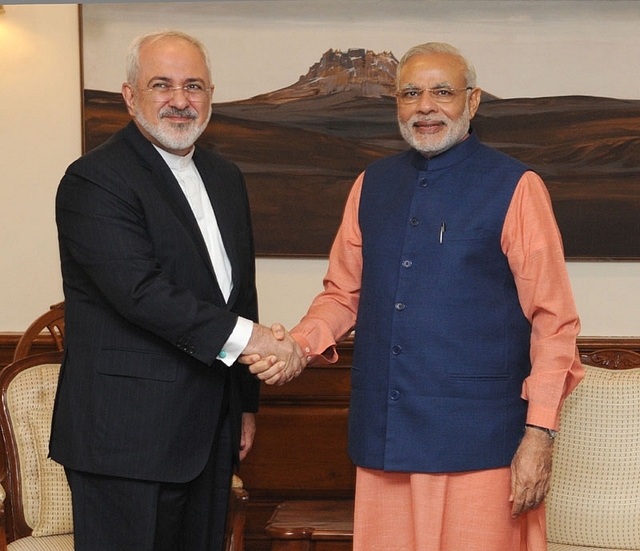
End Of Sanctions Opens Iran To India
It opens the doors to central Asia, Afghanistan, Russia, Caucasus region and Turkey
My earlier columns about the ramifications of US-Iran N deal in the Middle East were not flattering for Iran at all. The Iranian leadership also proved me correct with its usual penchant for pin pricks and rabble rousing.
When Iran’s Foreign Minister Mohammad Javad Zarif touched New Delhi’s base on Friday, the eyes turned eastward from Syria, where Zarif had spent considerable time with President Bashar al Assad amid intense diplomacy between Russia, the US and the Arab world to end the raging strife. The nuclear deal’s implications are no less complex in South Asia, albeit with less stakes.
Let us start with India, assuming that the deal will not destabilise Middle East, not a far-fetched speculation at all. More than 7 million Indian nationals send from Middle East to India billions of dollars in remittances. If the region burns, why will the flames not touch the remittances? However, let us spare a brighter prospect to India and Iran.
India is different from the rest of the world and therefore from the Middle East too, in almost every conceivable aspect. Both the countries have been accommodative to each other’s political dynamics. Iran’s ambassador to India Gholamreza Ansari expressed gratitude to India for extending help to Iran during the sanctions. “India opened a credit line that helped in easing economic pressure on the regime,” he said, according to a report in a section of media, adding in the same refrain that India’s dues of 1 billion $ can be utilised for setting up development projects in Iran,”. It is only the beginning of the end of sanctions.
As the deal breaks Iran free to mingle with the world, India ‘will be in a position to increase its oil imports from Iran. Iran was a top oil supplier for New Delhi’ till the US urged the Indians to scale back.
Besides, an undersea gas pipeline from Iran to India could not only deliver more than 30 million cubic meters of gas per day but also save the poor from the life threatening pollution and smoke billowing from their kitchens. Gas will be nothing less than a new lease of life to the poor and the tribe using either wood or coal to cook their food. Affordability is a different story.
Zarif will also do well to meet Union Transport Minister Nitin Gadkari over Chabahar port project, crucial for India’s access to central Asia. The project may start operating by December 2016. Appreciating India’s strategic expectations and hopes from this port, Iran’s ambassador to Iran said, “A great potential of cooperation exists between India and Iran. Iran offers access to India through the Chabahar and Bandar Abbas ports and through the north-south corridor to central Asia, Afghanistan, Russia, Caucasus region and Turkey,”.
India must develop this strategic warm water port to access to markets in Afghanistan and Central Asia — an access that it does not have via Pakistan, which denies India transit rights.
Chabahar may thus change the game. It could serve as a gateway to the Middle East and Europe for exports coming from Afghanistan and Central Asia.
Speaking to a New Delhi based English daily in May this year, Gholamreza Ansari had said, “Iran is the best way for India to have access to Central Asia, to Afghanistan, to Russia, even north Europe. Also, minerals. Indians are very capable of mineral industries. Iran has a huge demand for mineral industries. And it’s the same in the sector of security cooperation. Persian Gulf, Oman Sea and Indian Ocean are important waterways for Indians and Iranians. Waterways should be safe, secure for better trade not only for India and Iran, but also the region itself. Afghanistan is another issue. Afghanistan is a matter of interest due to security and stability for India and Iran. So potential is great and by removing obstacles like P5+1 and the Iran deal, it will create a huge huge potential between Iran and India.”
Sanctions on Iran had put paid to India’s hopes for long. Now the deal has given a fresh lease of life to the ties. And Iran is more eager to swing to act than India.
When asked about the Farzad B gas fields, Iran’s ambassador to India said as much in May, “You stopped the pipeline because of the American policy. That is not our fault. If you stop your efforts, that’s your fault, not ours…….Iran cannot wait for decades for Indians to prepare themselves for exploration. You are very patient people, but we are not.”
Afghanistan could reap the biggest benefits from the US-Iran N deal.
The benefits for Kabul are clear. The Chabahar port will not only push more commerce with India but also help open up new markets (Middle East and Europe) for Afghanistan. At the moment, Kabul’s import and export partners are restricted to South and Central Asia.